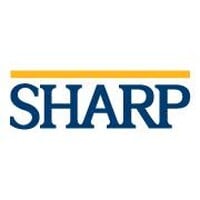
Sharp HealthCare Company Cyber Security Posture
sharp.comSharp HealthCare is a not-for-profit health care system based in San Diego, California, with four acute care hospitals, three specialty hospitals, three medical groups and a health plan. We provide medical services in virtually all fields of medicine, including primary care, heart care, cancer, orthopedics, stroke/neurology, women’s health, rehabilitation, robotic surgery, bariatric surgery, chemical dependency and behavioral health. Sharp sets the community standard for exceptional care. Sharp Chula Vista Medical Center, Sharp Grossmont Hospital and Sharp Memorial Hospital have received the prestigious Magnet recognition by the American Nurses Credentialing Center for excellence in nursing practices and quality patient care. At the heart of our organization are more than 20,000 nurses, staff, affiliated physicians, and volunteers who are on a journey to make health care better for our patients and their families. It’s what we call The Sharp Experience – treating each person with dignity, compassion and respect, and using our clinical excellence and advanced technology to deliver the highest-quality patient care. We are dedicated to transforming the health care experience by making Sharp the best place to work, the best place to practice medicine and the best place to receive care in San Diego.
Sharp HealthCare Company Details
sharp-healthcare
10960 employees
61291.0
62
Hospitals and Health Care
sharp.com
79
SHA_3362704
In-progress
Between 500 and 600
This score is AI-generated and less favored by cyber insurers, who prefer the TPRM score.
 Sharp HealthCare Global Score
Sharp HealthCare Global Score.png)

Sharp HealthCare Company Scoring based on AI Models
| Model Name | Date | Description | Current Score Difference | Score |
|---|---|---|---|---|
| AVERAGE-Industry | 03-12-2025 | This score represents the average cybersecurity rating of companies already scanned within the same industry. It provides a benchmark to compare an individual company's security posture against its industry peers. | N/A | Between 500 and 600 |
Sharp HealthCare Company Cyber Security News & History
| Entity | Type | Severity | Impact | Seen | Url ID | Details | View |
|---|
Sharp HealthCare Company Subsidiaries

Sharp HealthCare is a not-for-profit health care system based in San Diego, California, with four acute care hospitals, three specialty hospitals, three medical groups and a health plan. We provide medical services in virtually all fields of medicine, including primary care, heart care, cancer, orthopedics, stroke/neurology, women’s health, rehabilitation, robotic surgery, bariatric surgery, chemical dependency and behavioral health. Sharp sets the community standard for exceptional care. Sharp Chula Vista Medical Center, Sharp Grossmont Hospital and Sharp Memorial Hospital have received the prestigious Magnet recognition by the American Nurses Credentialing Center for excellence in nursing practices and quality patient care. At the heart of our organization are more than 20,000 nurses, staff, affiliated physicians, and volunteers who are on a journey to make health care better for our patients and their families. It’s what we call The Sharp Experience – treating each person with dignity, compassion and respect, and using our clinical excellence and advanced technology to deliver the highest-quality patient care. We are dedicated to transforming the health care experience by making Sharp the best place to work, the best place to practice medicine and the best place to receive care in San Diego.
Access Data Using Our API

Get company history
.png)
Sharp HealthCare Cyber Security News
Healthcare Cybersecurity: Responding to Ransomware
This article outlines key strategies for healthcare organizations to prevent, respond to, and recover from ransomware incidents—while minimizing ...
Leaders from Sharp HealthCare and MCG Discuss AI-Driven Utilization Management Success at CMSA 2025
Care management experts will discuss the benefits of leveraging new technologies to reduce hospital administrative burdens.
Dragos reports surge in ransomware attacks as AI-powered tactics drive sharp rise in industrial targeting
New data from Dragos reveals that ransomware groups and their affiliates intensified operations in the first quarter of 2025, ...
Palomar Health, Sharp enter into agreement to jointly administer medical services
Palomar Health and Sharp HealthCare announced a new partnership on Wednesday with the hopes of enhancing a variety of patient services across North County.
Strengthening healthcare cybersecurity: Focus on implementation, not new legislation
Europe's healthcare sector faces an escalating cybersecurity crisis, with a sharp increase in ransomware and data-related attacks targeting hospitals and ...
A new standard to address growing cyber threats to medical devices
The former CTO of IBM explains IEEE 2933, a new healthcare cybersecurity standard from the IEEE Standards Association.
LIST: Massive IT outage impacts multiple San Diego agencies & services
SAN DIEGO (KGTV) – Friday's massive IT outage impacted businesses across globe, including multiple San Diego government entities and ...
⚡ THN Weekly Recap: Top Cybersecurity Threats, Tools and Tips [27 January]
This week, we're breaking down the sophisticated world of AI-driven threats, key updates in regulations, and some urgent vulnerabilities in healthcare tech ...
Sharp notifies nearly 63,000 patients of data breach
Sharp notifies nearly 63,000 patients of data breach · Hackers, provider says, did not obtain bank or credit card data or Social Security ...

Sharp HealthCare Similar Companies

Trinity Health
Trinity Health is one of the largest not-for-profit, Catholic health care systems in the nation. It is a family of 123,000 colleagues and nearly 27,000 physicians and clinicians caring for diverse communities across 26 states. Nationally recognized for care and experience, the Trinity Health system

King Fahad Armed Forces Hospital
The King Fahd Armed Forces Hospital is situated in the busy seaport of Jeddah on the western seaboard of the Red Sea. Initially there was only a 76-bed Armed Forces Hospital in Jeddah. However, to meet the medical needs of the personnel of all of the Armed Forces Installations there, a new and progr
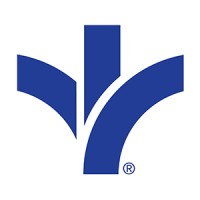
Bon Secours
Bon Secours Health System, Inc. based in Marriottsville, Maryland, is a $3.2 billion dollar not-for-profit Catholic health system that owns, manages or joint ventures 18 acute care, 5 long term care, 4 assisted living, 6 retirement communities/senior housing, 14 home care and hospice services, and o
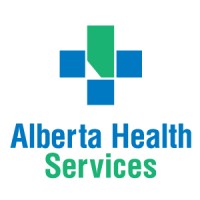
Alberta Health Services
Alberta Health Services (AHS) is Canada’s first and largest province wide, fully-integrated health system, responsible for delivering health services to the over four million people living in Alberta. Our skilled and dedicated professionals, support staff and physicians come from numerous discipli
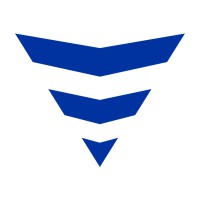
Fresenius Medical Care
Fresenius Medical Care is the world’s leading provider of products and services for individuals with renal diseases. We aim to create a future worth living for chronically and critically ill patients – worldwide and every day. Thanks to our decades of experience in dialysis, our innovative research
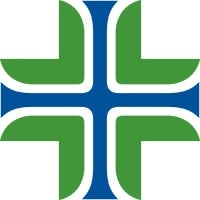
Providence
Every day, 119,000 compassionate caregivers serve patients and communities through Providence St. Joseph Health, a national, Catholic, not-for-profit health system, driven by a belief that health is a human right. Rooted in the founding missions of the Sisters of Providence and the Sisters of St.

Frequently Asked Questions (FAQ) on Cybersecurity Incidents
Sharp HealthCare CyberSecurity History Information
Total Incidents: According to Rankiteo, Sharp HealthCare has faced 0 incidents in the past.
Incident Types: As of the current reporting period, Sharp HealthCare has not encountered any cybersecurity incidents.
Total Financial Loss: The total financial loss from these incidents is estimated to be {total_financial_loss}.
Cybersecurity Posture: The company's overall cybersecurity posture is described as Sharp HealthCare is a not-for-profit health care system based in San Diego, California, with four acute care hospitals, three specialty hospitals, three medical groups and a health plan. We provide medical services in virtually all fields of medicine, including primary care, heart care, cancer, orthopedics, stroke/neurology, women’s health, rehabilitation, robotic surgery, bariatric surgery, chemical dependency and behavioral health. Sharp sets the community standard for exceptional care. Sharp Chula Vista Medical Center, Sharp Grossmont Hospital and Sharp Memorial Hospital have received the prestigious Magnet recognition by the American Nurses Credentialing Center for excellence in nursing practices and quality patient care. At the heart of our organization are more than 20,000 nurses, staff, affiliated physicians, and volunteers who are on a journey to make health care better for our patients and their families. It’s what we call The Sharp Experience – treating each person with dignity, compassion and respect, and using our clinical excellence and advanced technology to deliver the highest-quality patient care. We are dedicated to transforming the health care experience by making Sharp the best place to work, the best place to practice medicine and the best place to receive care in San Diego..
Detection and Response: The company detects and responds to cybersecurity incidents through {description_of_detection_and_response_process}.
Incident Details
Incident 1: Ransomware Attack
Title: {Incident_Title}
Description: {Brief_description_of_the_incident}
Date Detected: {Detection_Date}
Date Publicly Disclosed: {Disclosure_Date}
Date Resolved: {Resolution_Date}
Type: {Type_of_Attack}
Attack Vector: {Attack_Vector}
Vulnerability Exploited: {Vulnerability}
Threat Actor: {Threat_Actor}
Motivation: {Motivation}
Incident 2: Data Breach
Title: {Incident_Title}
Description: {Brief_description_of_the_incident}
Date Detected: {Detection_Date}
Date Publicly Disclosed: {Disclosure_Date}
Date Resolved: {Resolution_Date}
Type: {Type_of_Attack}
Attack Vector: {Attack_Vector}
Vulnerability Exploited: {Vulnerability}
Threat Actor: {Threat_Actor}
Motivation: {Motivation}
Common Attack Types: As of now, the company has not encountered any reported incidents involving common cyberattacks.
Identification of Attack Vectors: The company identifies the attack vectors used in incidents through {description_of_identification_process}.
Impact of the Incidents
Incident 1: Ransomware Attack
Financial Loss: {Financial_Loss}
Data Compromised: {Data_Compromised}
Systems Affected: {Systems_Affected}
Downtime: {Downtime}
Operational Impact: {Operational_Impact}
Conversion Rate Impact: {Conversion_Rate_Impact}
Revenue Loss: {Revenue_Loss}
Customer Complaints: {Customer_Complaints}
Brand Reputation Impact: {Brand_Reputation_Impact}
Legal Liabilities: {Legal_Liabilities}
Identity Theft Risk: {Identity_Theft_Risk}
Payment Information Risk: {Payment_Information_Risk}
Incident 2: Data Breach
Financial Loss: {Financial_Loss}
Data Compromised: {Data_Compromised}
Systems Affected: {Systems_Affected}
Downtime: {Downtime}
Operational Impact: {Operational_Impact}
Conversion Rate Impact: {Conversion_Rate_Impact}
Revenue Loss: {Revenue_Loss}
Customer Complaints: {Customer_Complaints}
Brand Reputation Impact: {Brand_Reputation_Impact}
Legal Liabilities: {Legal_Liabilities}
Identity Theft Risk: {Identity_Theft_Risk}
Payment Information Risk: {Payment_Information_Risk}
Average Financial Loss: The average financial loss per incident is {average_financial_loss}.
Commonly Compromised Data Types: The types of data most commonly compromised in incidents are {list_of_commonly_compromised_data_types}.
Incident 1: Ransomware Attack
Entity Name: {Entity_Name}
Entity Type: {Entity_Type}
Industry: {Industry}
Location: {Location}
Size: {Size}
Customers Affected: {Customers_Affected}
Incident 2: Data Breach
Entity Name: {Entity_Name}
Entity Type: {Entity_Type}
Industry: {Industry}
Location: {Location}
Size: {Size}
Customers Affected: {Customers_Affected}
Response to the Incidents
Incident 1: Ransomware Attack
Incident Response Plan Activated: {Yes/No}
Third Party Assistance: {Yes/No}
Law Enforcement Notified: {Yes/No}
Containment Measures: {Containment_Measures}
Remediation Measures: {Remediation_Measures}
Recovery Measures: {Recovery_Measures}
Communication Strategy: {Communication_Strategy}
Adaptive Behavioral WAF: {Adaptive_Behavioral_WAF}
On-Demand Scrubbing Services: {On_Demand_Scrubbing_Services}
Network Segmentation: {Network_Segmentation}
Enhanced Monitoring: {Enhanced_Monitoring}
Incident 2: Data Breach
Incident Response Plan Activated: {Yes/No}
Third Party Assistance: {Yes/No}
Law Enforcement Notified: {Yes/No}
Containment Measures: {Containment_Measures}
Remediation Measures: {Remediation_Measures}
Recovery Measures: {Recovery_Measures}
Communication Strategy: {Communication_Strategy}
Adaptive Behavioral WAF: {Adaptive_Behavioral_WAF}
On-Demand Scrubbing Services: {On_Demand_Scrubbing_Services}
Network Segmentation: {Network_Segmentation}
Enhanced Monitoring: {Enhanced_Monitoring}
Incident Response Plan: The company's incident response plan is described as {description_of_incident_response_plan}.
Third-Party Assistance: The company involves third-party assistance in incident response through {description_of_third_party_involvement}.
Data Breach Information
Incident 2: Data Breach
Type of Data Compromised: {Type_of_Data}
Number of Records Exposed: {Number_of_Records}
Sensitivity of Data: {Sensitivity_of_Data}
Data Exfiltration: {Yes/No}
Data Encryption: {Yes/No}
File Types Exposed: {File_Types}
Personally Identifiable Information: {Yes/No}
Prevention of Data Exfiltration: The company takes the following measures to prevent data exfiltration: {description_of_prevention_measures}.
Handling of PII Incidents: The company handles incidents involving personally identifiable information (PII) through {description_of_handling_process}.
Ransomware Information
Incident 1: Ransomware Attack
Ransom Demanded: {Ransom_Amount}
Ransom Paid: {Ransom_Paid}
Ransomware Strain: {Ransomware_Strain}
Data Encryption: {Yes/No}
Data Exfiltration: {Yes/No}
Ransom Payment Policy: The company's policy on paying ransoms in ransomware incidents is described as {description_of_ransom_payment_policy}.
Data Recovery from Ransomware: The company recovers data encrypted by ransomware through {description_of_data_recovery_process}.
Regulatory Compliance
Incident 1: Ransomware Attack
Regulations Violated: {Regulations_Violated}
Fines Imposed: {Fines_Imposed}
Legal Actions: {Legal_Actions}
Regulatory Notifications: {Regulatory_Notifications}
Incident 2: Data Breach
Regulations Violated: {Regulations_Violated}
Fines Imposed: {Fines_Imposed}
Legal Actions: {Legal_Actions}
Regulatory Notifications: {Regulatory_Notifications}
Regulatory Frameworks: The company complies with the following regulatory frameworks regarding cybersecurity: {list_of_regulatory_frameworks}.
Ensuring Regulatory Compliance: The company ensures compliance with regulatory requirements through {description_of_compliance_measures}.
Lessons Learned and Recommendations
Incident 1: Ransomware Attack
Lessons Learned: {Lessons_Learned}
Incident 2: Data Breach
Lessons Learned: {Lessons_Learned}
Incident 1: Ransomware Attack
Recommendations: {Recommendations}
Incident 2: Data Breach
Recommendations: {Recommendations}
Key Lessons Learned: The key lessons learned from past incidents are {list_of_key_lessons_learned}.
Implemented Recommendations: The company has implemented the following recommendations to improve cybersecurity: {list_of_implemented_recommendations}.
References
Additional Resources: Stakeholders can find additional resources on cybersecurity best practices at {list_of_additional_resources}.
Investigation Status
Incident 1: Ransomware Attack
Investigation Status: {Investigation_Status}
Incident 2: Data Breach
Investigation Status: {Investigation_Status}
Communication of Investigation Status: The company communicates the status of incident investigations to stakeholders through {description_of_communication_process}.
Stakeholder and Customer Advisories
Incident 1: Ransomware Attack
Stakeholder Advisories: {Stakeholder_Advisories}
Customer Advisories: {Customer_Advisories}
Incident 2: Data Breach
Stakeholder Advisories: {Stakeholder_Advisories}
Customer Advisories: {Customer_Advisories}
Advisories Provided: The company provides the following advisories to stakeholders and customers following an incident: {description_of_advisories_provided}.
Initial Access Broker
Incident 1: Ransomware Attack
Entry Point: {Entry_Point}
Reconnaissance Period: {Reconnaissance_Period}
Backdoors Established: {Backdoors_Established}
High Value Targets: {High_Value_Targets}
Data Sold on Dark Web: {Yes/No}
Incident 2: Data Breach
Entry Point: {Entry_Point}
Reconnaissance Period: {Reconnaissance_Period}
Backdoors Established: {Backdoors_Established}
High Value Targets: {High_Value_Targets}
Data Sold on Dark Web: {Yes/No}
Monitoring and Mitigation of Initial Access Brokers: The company monitors and mitigates the activities of initial access brokers through {description_of_monitoring_and_mitigation_measures}.
Post-Incident Analysis
Incident 1: Ransomware Attack
Root Causes: {Root_Causes}
Corrective Actions: {Corrective_Actions}
Incident 2: Data Breach
Root Causes: {Root_Causes}
Corrective Actions: {Corrective_Actions}
Post-Incident Analysis Process: The company's process for conducting post-incident analysis is described as {description_of_post_incident_analysis_process}.
Corrective Actions Taken: The company has taken the following corrective actions based on post-incident analysis: {list_of_corrective_actions_taken}.
Additional Questions
General Information
Ransom Payment History: The company has {paid/not_paid} ransoms in the past.
Last Ransom Demanded: The amount of the last ransom demanded was {last_ransom_amount}.
Last Attacking Group: The attacking group in the last incident was {last_attacking_group}.
Incident Details
Most Recent Incident Detected: The most recent incident detected was on {most_recent_incident_detected_date}.
Most Recent Incident Publicly Disclosed: The most recent incident publicly disclosed was on {most_recent_incident_publicly_disclosed_date}.
Most Recent Incident Resolved: The most recent incident resolved was on {most_recent_incident_resolved_date}.
Impact of the Incidents
Highest Financial Loss: The highest financial loss from an incident was {highest_financial_loss}.
Most Significant Data Compromised: The most significant data compromised in an incident was {most_significant_data_compromised}.
Most Significant System Affected: The most significant system affected in an incident was {most_significant_system_affected}.
Response to the Incidents
Third-Party Assistance in Most Recent Incident: The third-party assistance involved in the most recent incident was {third_party_assistance_in_most_recent_incident}.
Containment Measures in Most Recent Incident: The containment measures taken in the most recent incident were {containment_measures_in_most_recent_incident}.
Data Breach Information
Most Sensitive Data Compromised: The most sensitive data compromised in a breach was {most_sensitive_data_compromised}.
Number of Records Exposed: The number of records exposed in the most significant breach was {number_of_records_exposed}.
Ransomware Information
Highest Ransom Demanded: The highest ransom demanded in a ransomware incident was {highest_ransom_demanded}.
Highest Ransom Paid: The highest ransom paid in a ransomware incident was {highest_ransom_paid}.
Regulatory Compliance
Highest Fine Imposed: The highest fine imposed for a regulatory violation was {highest_fine_imposed}.
Most Significant Legal Action: The most significant legal action taken for a regulatory violation was {most_significant_legal_action}.
Lessons Learned and Recommendations
Most Significant Lesson Learned: The most significant lesson learned from past incidents was {most_significant_lesson_learned}.
Most Significant Recommendation Implemented: The most significant recommendation implemented to improve cybersecurity was {most_significant_recommendation_implemented}.
References
Most Recent Source: The most recent source of information about an incident is {most_recent_source}.
Most Recent URL for Additional Resources: The most recent URL for additional resources on cybersecurity best practices is {most_recent_url}.
Investigation Status
Current Status of Most Recent Investigation: The current status of the most recent investigation is {current_status_of_most_recent_investigation}.
Stakeholder and Customer Advisories
Most Recent Stakeholder Advisory: The most recent stakeholder advisory issued was {most_recent_stakeholder_advisory}.
Most Recent Customer Advisory: The most recent customer advisory issued was {most_recent_customer_advisory}.
Initial Access Broker
Most Recent Entry Point: The most recent entry point used by an initial access broker was {most_recent_entry_point}.
Most Recent Reconnaissance Period: The most recent reconnaissance period for an incident was {most_recent_reconnaissance_period}.
Post-Incident Analysis
Most Significant Root Cause: The most significant root cause identified in post-incident analysis was {most_significant_root_cause}.
Most Significant Corrective Action: The most significant corrective action taken based on post-incident analysis was {most_significant_corrective_action}.
What Do We Measure?
















Every week, Rankiteo analyzes billions of signals to give organizations a sharper, faster view of emerging risks. With deeper, more actionable intelligence at their fingertips, security teams can outpace threat actors, respond instantly to Zero-Day attacks, and dramatically shrink their risk exposure window.
These are some of the factors we use to calculate the overall score:
Identify exposed access points, detect misconfigured SSL certificates, and uncover vulnerabilities across the network infrastructure.
Gain visibility into the software components used within an organization to detect vulnerabilities, manage risk, and ensure supply chain security.
Monitor and manage all IT assets and their configurations to ensure accurate, real-time visibility across the company's technology environment.
Leverage real-time insights on active threats, malware campaigns, and emerging vulnerabilities to proactively defend against evolving cyberattacks.




